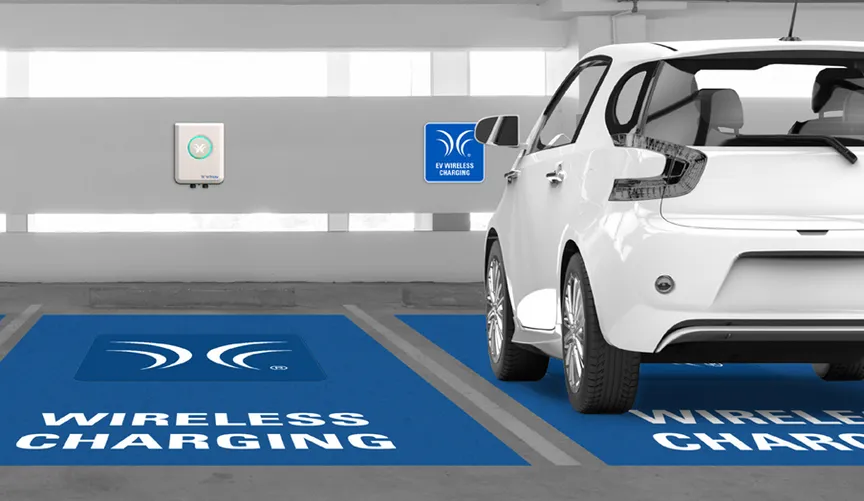In a world where convenience is king, wireless EV charging is emerging as a game-changer for urban mobility. Imagine driving into your garage or parking spot without ever having to fumble with charging cables. According to a recent report by Bloomberg Green, wireless charging technology for electric vehicles (EVs) is set to become a $1 billion market by 2025. As EV adoption surges, cities around the globe are investing in this cutting-edge technology to streamline urban transportation and reduce emissions. In this article, we’ll explore how wireless EV charging works, its benefits, and what it means for the future of urban mobility.
The Basics of Wireless EV Charging
How Does Wireless EV Charging Work?
Wireless EV charging, also known as inductive charging, uses electromagnetic fields to transfer energy between two objects. Here’s a simple breakdown of how it works:
- Charging Pad Installation: A charging pad is installed on the ground where the EV is parked.
- Receiver Coil in the Car: The EV is equipped with a receiver coil that aligns with the charging pad.
- Energy Transfer: When the car is parked over the pad, an electromagnetic field is created to transfer energy from the pad to the receiver, charging the battery without physical connectors.
The Technology Behind It
- Inductive Charging Coils: These are responsible for creating and receiving the electromagnetic field.
- Resonant Inductive Coupling: Enhances efficiency by tuning the coils to the same frequency.
- Advanced Power Electronics: Control and manage the power flow for optimal charging.
Benefits of Wireless Charging
- Convenience: No need to plug in or unplug; simply park and charge.
- Efficiency: Reduces wear and tear on physical connectors.
- Safety: Minimizes exposure to live electrical components.
The Impact on Urban Mobility
Reducing Urban Clutter
Wireless charging can significantly reduce the clutter of cables in urban environments. Cities like Oslo and San Francisco are already piloting wireless charging stations in public parking areas, as reported by Electrek. These stations not only enhance the aesthetic appeal but also improve accessibility for EV users.
Enhancing Public Transit Systems
Incorporating wireless charging into public transit systems could revolutionize how buses and taxis operate. According to TechCrunch, cities like London are experimenting with wireless charging pads at bus stops to allow electric buses to top up their batteries throughout the day, reducing downtime and maintaining consistent service.
Encouraging EV Adoption
By making charging more accessible and less intrusive, wireless technology could encourage more people to make the switch to electric vehicles. The International Energy Agency predicts that wireless charging infrastructure could lead to a 10% increase in EV adoption by 2030.
Practical Considerations for Adopting Wireless EV Charging
How to Charge Your EV Wirelessly
- Check Compatibility: Ensure your EV model supports wireless charging. Brands like Hyundai and Nissan offer models with built-in wireless charging capabilities.
- Install a Home Charging Pad: Work with certified installers to set up a charging pad in your garage or driveway.
- Locate Public Wireless Charging Stations: Use apps like PlugShare to find nearby public wireless chargers.
Where to Buy Wireless Charging Equipment
- Online Retailers: Amazon and eBay offer wireless charging pads and accessories.
- Automotive Dealerships: Many dealerships provide installation services for compatible EVs.
- Specialized Vendors: Companies like WiTricity and Plugless specialize in wireless EV charging solutions.
What to Compare When Choosing Wireless Charging
- Power Rating: Higher power ratings mean faster charging. Look for options between 3.6 kW to 11 kW.
- Efficiency: Check efficiency ratings to ensure minimal energy loss.
- Cost: Compare installation and maintenance costs, which can vary based on location and equipment.
Future Trends in Wireless EV Charging
Integration with Autonomous Vehicles
As autonomous vehicles become more prevalent, wireless charging could provide a seamless way for these cars to charge themselves without human intervention. According to Wired, this technology will be crucial for fleets of autonomous taxis.
Smart Grid Compatibility
Wireless charging systems can be integrated with smart grids to optimize energy use and reduce costs. The International Energy Agency notes that this could lead to more sustainable urban energy management.
Expansion into More Cities
With the success of pilot programs, more cities worldwide are expected to adopt wireless charging infrastructure. Reuters Mobility reports that cities in China, Germany, and the United States are planning large-scale rollouts.
Conclusion
Wireless EV charging is poised to transform urban mobility by offering a more convenient, efficient, and sustainable way to power electric vehicles. As technology advances and more cities embrace this innovation, we can expect to see a cleaner, more streamlined urban landscape. Are you ready to embrace the future of transportation? Consider upgrading to a wireless-compatible EV or advocating for more infrastructure in your community. As cities continue to innovate, the possibilities for wireless charging are endless—offering a glimpse into a future where urban mobility is both smart and sustainable.

